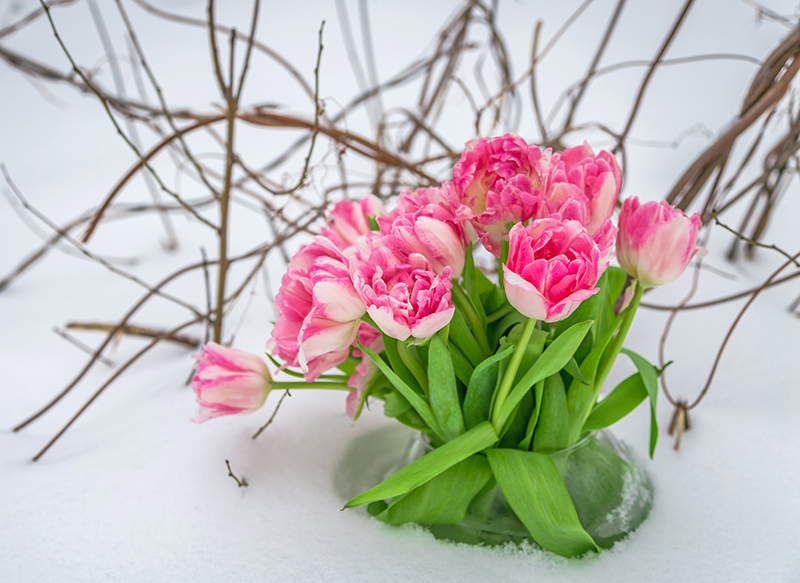Expert Advice on Keeping Flowers Vibrant
Posted on 04/07/2025
There's something magical about a fresh bouquet: the colors, the aroma, the way flowers effortlessly lift any space. Yet, keeping flowers vibrant and healthy at home or in arrangements can be a challenge. Wilting petals and fading blooms often cut the joy short. But fear not--with the right knowledge and a few expert techniques, you can enjoy your flowers for much longer!
Why Does Flower Freshness Matter?
Fresh, vibrant flowers aren't just aesthetically pleasing--they bring tangible benefits to our environment and emotional well-being. Research shows that flowers can reduce stress, boost happiness, and elevate concentration. Maintaining flower vitality ensures you reap these rewards for as long as possible.

Top Reasons Flowers Lose Vibrancy
- Insufficient or excessive water
- Lack of proper nutrition
- Poor environmental conditions (excessive sunlight, heat, or drafts)
- Incorrect trimming and handling
- Natural aging process
Understanding these issues is the first step in preserving the brilliance and health of your flower arrangements.
Preparation: The Foundation for Lasting Flower Freshness
Keeping flowers vibrant longer starts with preparation even before the flowers are placed in a vase. Here's how the professionals do it:
1. Choose the Freshest Flowers
- Shop Smart: Select flowers with tight, unblemished buds. Avoid stems with mushy, brown ends or wilted leaves.
- Check the Leaves: Healthy green foliage is a great indicator of freshness.
- Timing Matters: Buy from reputable florists, especially during peak restock days.
2. Properly Condition Your Flowers
- Remove excess leaves that might sit below the waterline to prevent bacterial growth.
- Re-cut stems at a 45-degree angle under water to improve water uptake.
- Use sharp, clean clippers or knives to avoid crushing stem tissues.
Expert Techniques for Keeping Flowers Vibrant
1. Hydration Is Key
Water is the lifeline for any fresh flower arrangement. It keeps petals plump and colors vivid. Here's how to optimize hydration:
- Change the Water Daily: Stagnant water harbors bacteria that kill flowers quickly.
- Use Lukewarm Water: Most flowers absorb slightly warm water more efficiently than cold.
- Keep Water Levels Consistent: Check and refill the vase regularly.
2. Add Floral Preservative
A floral preservative is a secret weapon used by florists to extend the life of cut flowers. Generally, these packets contain: a biocide to control bacteria, an acidifier to regulate pH, and sugar for nutrition.
- DIY Alternative: Mix a teaspoon of sugar, a few drops of bleach, and a teaspoon of lemon or lime juice into a quart of vase water.
3. Control the Environment
The location of your flower arrangement directly influences its longevity.
- Avoid Direct Sunlight: Place flowers in a cool spot away from harsh sunbeams.
- Stay Clear of Heat Sources: Radiators, fireplaces, and electronics can dry out blooms quickly.
- Beware of Drafts: Sudden temperature shifts lead to premature wilting.
- Distance From Fruit: Ripening fruits release ethylene gas, which aggressively shortens flower lifespans.
4. Consistent Trimming for Optimal Uptake
Stems seal up over time, restricting water intake. Regular trimming keeps hydration channels open.
- Every two days, snip approximately 1cm off the stems, preferably underwater.
- Clear away any build-up of leaves or debris at the waterline during each trim.
Expert Maintenance Tips for Specific Flower Varieties
Each type of flower has unique needs. Here are tailored tips for keeping some popular blooms as vibrant as possible:
- Roses:
- Remove thorns and leaves below the waterline.
- Re-cut stems every other day for maximum freshness.
- If heads droop, submerge the whole stem in lukewarm water for 30 minutes.
- Tulips:
- Place in shallow water to prevent floppy stems.
- Keep in a cool, shaded area whenever possible.
- Orchids:
- Mist regularly for humidity.
- Change water every two days and use a clear vase for monitoring.
- Lilies:
- Remove pollen as soon as blooms open to avoid stains and prolong life.
- Gerbera Daisies:
- Keep stems supported, as they can droop easily.
- Use only a small amount of water to avoid bacterial build-up.
Natural and Homemade Flower Maintenance Solutions
DIY Approaches for Extending Flower Freshness
- Sugar and Vinegar Solution:
- Add 2 tablespoons of sugar and 2 tablespoons of white vinegar per quart of water. The sugar nourishes, while the vinegar inhibits bacteria.
- Aspirin:
- Crush one aspirin tablet and add it to the water. This lowers water pH and can keep flowers fresher for longer.
- Bleach:
- Add a quarter teaspoon per quart of water to fight bacteria, but don't overdo it--too much can damage stems.
- Coins:
- An old penny in the vase is a traditional method due to copper's antibacterial properties.
Common Flower Care Mistakes--and How to Fix Them
- Letting Water Get Cloudy:
Cloudy vase water means bacteria is thriving. Change water and clean the vase every day or every other day. - Neglecting Stem Trimming:
Skipping regular trims leads to blocked stems that can't absorb water. - Overcrowding the Vase:
Too many stems creates competition for nutrients and increases the risk of rot. Give blooms ample space. - Forgetting to Remove Decaying Flowers:
As soon as you spot wilted or dead blooms, remove them to prevent mold and bacteria from spreading.
Seasonal and Event-Based Flower Care
Caring for Flowers During Holidays and Events
Special occasions like weddings, birthdays, or holidays are synonymous with lavish floral displays. To preserve the vibrancy of these event bouquets:
- Keep arrangements in a cool room until they are needed.
- Transport flowers in water or using floral foam whenever possible.
- Gently spritz petals with cool water before public settings to freshen the display.
Adapting to Climate Change and Seasons
In hot summer months, flowers fade quickly--keep them away from windows and air conditioners. During winter, avoid placing flowers near radiators or direct drafts, and ensure water isn't too cold.
Innovative Products and Tools for Flower Longevity
Advanced Solutions for Maximizing Flower Color and Health
- Self-Cleaning Vases:
Designed to minimize bacterial buildup for lasting freshness. - Flower Food:
Pre-packaged solutions optimized for various flower types. - Humidity Domes:
Maintain optimal moisture for fragile blooms like orchids and hydrangeas.
Preserving Vibrancy When Drying or Pressing Flowers
Drying and pressing techniques allow you to enjoy the vibrancy of flowers long after their natural life ends. Experts recommend:
- Dry flowers upside down in a dark, well-ventilated area to retain color.
- For pressing, use parchment paper and change blotting material every few days to avoid mold.
- Preserved blooms should be kept away from direct sunlight to prevent fading.
Frequently Asked Questions on Keeping Flowers Vibrant
- How long do cut flowers last?
Most last 7-10 days with proper care, but some like alstroemeria or chrysanthemums can remain vibrant up to three weeks. - Can I use soda or bleach in vase water?
Yes--clear sodas provide sugar, and minimal bleach fights bacteria. Use both sparingly according to expert guidelines. - How often should I trim stems?
Every two days is ideal for promoting water uptake and keeping flowers vibrant.

Summary: Insights for Keeping Your Flowers Vibrant Longer
- Buy the freshest flowers possible.
- Promptly condition and correctly trim stems.
- Change water and supply plant food regularly.
- Control environmental conditions and avoid close contact with fruits.
- Use expert techniques for different flower varieties.
- Promptly remove any fading or decaying blooms from arrangements.
Final Words: Making Flower Beauty Last
Keeping flowers vibrant is both a science and an art. With careful preparation, strategic care, and the incorporation of proven expert tips, you can enjoy the lush colors and cheery vibes of your favorite blooms much longer. Whether you're doting over a romantic bouquet, creating a show-stopping centerpiece, or simply brightening your home, a proactive approach and a little extra attention go a long way in preserving flower vitality.
Implement these expert strategies, discard common myths, and let your flowers radiate their beauty for many days to come!
Latest Posts
Go Beyond the Bloom with 7 Unknown Tulip Facts
A Floral Connection: What Your Birth Flower Tells About Your Inner Self
Simple Techniques for Prolonging Your Cut Flowers





